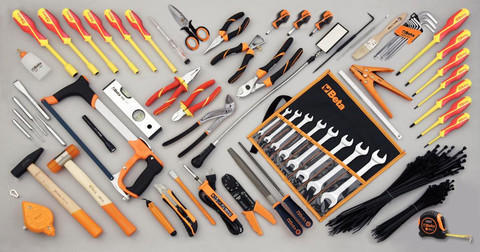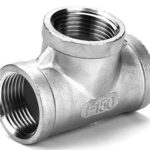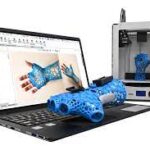This guide to hardware deals with industry-standard items of which, though common, the selection of can make or break the repair, upgrade, or maintenance of essential equipment. How much do you know about the technical standards for the fasteners, bearings, belts, and seals you’re already using?
Bolts, nuts, washers, oil seals, wiper rings, belts, and bearings … All form an endless list of specialty items that fall under the single term “hardware.” Think of any machine or assembly that you work with and you are surely bound to use some, or maybe the greater share, of the hardware items mentioned here. And just for clarification, in our use of the term, we mean items that are pre-formed and purchased directly from the market ready for use.
Bearings
Bearings and their matching races are indispensable parts in almost all machines with rotating parts. (Some simpler machines, like mower decks for example, may have rotating shafts running inside bushings.) The rotating parts you see around you, from fans and automobile wheels all the way to turbine engines in aircraft, run on bearings. Bearings tend to provide minimum friction for the rotation of shafts. Based on their construction, bearings are basically of two types.
Bearings are classified depending on the type of construction. Bush bearings and rolling element bearings are the two major classifications.
· The Classification of Bearings
1. The bush bearing class consists of hydrodynamic and hydrostatic bearings. These are normally designed for the particular application and thus are mostly custom built.
· Hydrodynamic Bearings – Constructional features
· Bearings in Marine Diesel Engines – an application of a hydrodynamic bearing
2. Rolling element bearings are those which possess rolling elements, i.e. balls or rollers, in them. The rolling elements provide an almost friction-free rotary motion for the bearing.
· Rolling Element Bearing – The constructional Features
· Classification of Rolling Element Bearings
Rolling element bearings are available in a wide variety of types. Rolling element bearings are usually categorized based on the type of rolling element present.
· Ball Bearings
· Cylindrical Roller Bearings
· Tapered Roller Bearings
· Spherical Roller Bearings
· Angular Contact Ball Bearings
· Four Point Contact Bearings
· Duplex or Paired Bearings
· Thrust Ball Bearings
· Thrust Roller Bearings
· Ceramic Ball Bearings
Selection and Maintenance of Rolling Element Bearings
Bearings always have to be properly selected for the particular application. A wrong selection of a bearing may lead to the failure of the bearing as well as damage the components it works in. Maintenance and lubrication of the bearings have a great deal of effect on the bearing life. Ensuring proper care procedures makes for trouble free operation of any machine.
· Selection of rolling element bearings
· Preloading of bearings
· Hydrostatic Lubrication (Types of Lubrication)
· Lubrication Systems for Rolling Element Bearings
Oil Seals or Shaft Seals
Shaft seals or oil seals are an integral part of automotive engines and axles or any other machine that needs to contain the lubricating oil within itself. Oil seals serve a dual purpose in preventing the lubricating oil inside from getting out and outside media like dirt and water getting in. Oil seals are made up of Buna-N rubber, Viton®, and other materials based on their area of application.
· What are Oil Seals or Shaft Seals?
· Stern Tube Seals – A marine engineering application
Fasteners – the Joining Elements
Any appliance you find around will tend to have at least a few screws in it. So common are they that people who have a mental deficiency are often said to have “a screw loose.” Of course, there are many other types of industry-standard fasteners, and all are elements that help in creating a good connection, which can be either permanent or temporary, between pieces. Elements like bolts, screws, nuts, and rivets are all good examples of fasteners.
· What are Fasteners? Types of Fasteners
· Machine Elements – Fasteners
· Rivets and Types of Rivet Joints
Also important to know about are the tools to be used to tighten and loosen fasteners. These spanners and wrenches also typical hardware items.
· Types of Spanners
· What is a Box Type Spanner?
· Pincer, Locking, and Cutting Pliers
Couplings
Couplings play an important role in the transmission of translatory or rotary motion from one shaft to another. They also tend to act as mechanical fuses in many cases, preventing any damage to the driven as well as the driving machinery. Some couplings are capable of tolerating misalignments between shafts, and universal couplings can connect two shafts which are not collinear to each other.
· What is a Coupling? Types of Shaft Couplings
· What are Gear Coupling?
· Flexible Coupling – Jaw Type Elastomeric Coupling
· What are Bibby Couplings?
Transmission Belts
Transmission belts are used to transmit rotary motion from one shaft to another. Just peep under the hood an automobile and you are almost sure to find a transmission belt running around at least three pulleys. Various types of belts are available such as flat belts, V belts, cogged belts, and timing belts.
· Industrial V Belts (V-Belt) Construction and Types by Size Classification
· Industrial Timing Belts


